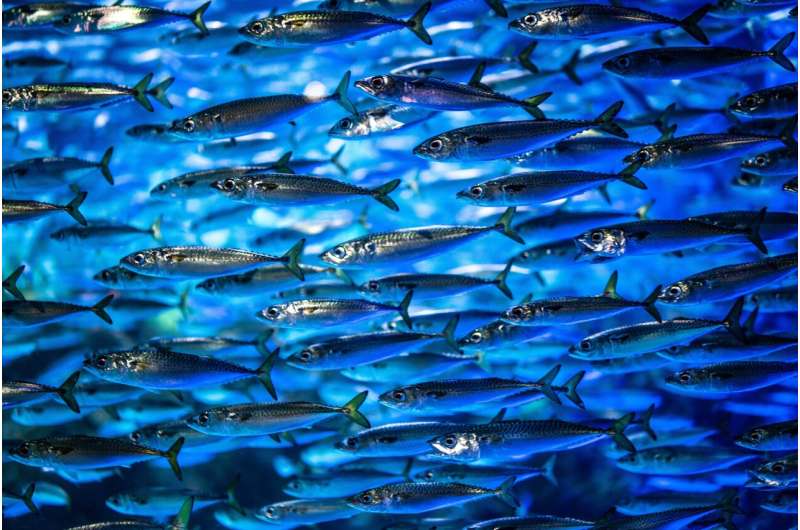The silver lining to storm surge: How some baby fish ride out hurricanes to success

Humans loathe the deadly impact of storm surge, and for good reason. But new research shows how juvenile tarpon and snook can actually benefit from it. In turn, scientists are learning how to design more eco-friendly developments that help the fish survive.
Ongoing studies by the Florida Fish and Wildlife Conservation Commission and the Bonefish & Tarpon Trust show that young-of-the-year tarpon and snook take advantage of storm surge and king tides, essentially riding the water into remote semi-landlocked ponds. When the water recedes, the small tarpon and snook rule their new micro kingdoms, the proverbial big fish in small ponds.
Several studies pieced together indicate that spawning season for both tarpon and snook coincides with summer high tides and storm season, said JoEllen Wilson, a biologist with the Bonefish & Tarpon Trust.
"We have extra high water and winds that are pushing (the newborn fish) back into these habitats. They're adapted to be able to reach what we call ephemerally connected or intermittently connected locations."
The advantage of being swept into these shallow, often inhospitable ponds is twofold.
Firstly, the yearling tarpon and snook are protected from larger predatory fish such as sharks, jacks and adult snook that don't have access.
Secondly, they are precisely adapted to survive in low-oxygen water, giving them an advantage over both prey and rivals.
While most fish need to pass oxygen-rich water through their gills, tarpon are able to gulp air and absorb oxygen through their swim bladders, allowing them to survive in hot, low-oxygen conditions that kill competitors like snapper, sea trout or freshwater gar (some of the ponds are brackish or freshwater).
Young snook can't gulp air, but can survive in very low oxygen habitats as well.
As they mature, they seem to lose that ability.
"Once they reach these habitats, they're the sole large predatory fish that can survive in there," said the FWC's Matt Bunting, whose research tracked the yearling fish in and out of these isolated ponds on Florida's west coast. He said the same behavior plays out on the east coast as well.
Bunting, who grew up in Cooper City fishing for small tarpon in suburban canals and ponds, has seen juvenile tarpon surviving in water temperatures greater than 100 degrees, with dissolved oxygen levels at zero, "to the point where there's been a mass fish die-off in one of these ponds, and tarpon are the sole fish that are surviving," he said.
The result is that the yearling snook and tarpon can feast on little mosquito fish in these semi-landlocked ponds, and have all the food to themselves.
Bunting's research showed that the tarpon and snook will stay in the ponds from one to three years, but the closer they are to the estuary the earlier they might leave. Sometimes a king tide will bring enough water.
His study showed some fish left after three years—the time it took for a second tropical storm or hurricane surge to reach them.
To gain data, Bunting and his team outfitted yearling tarpon and snook with acoustic transmitters that would ping when the fish swam near any number of receivers installed in the pond and downstream creek system.
Researchers also placed water-level sensors in the ponds. The study showed that the fish would leave when water levels rose.
Bunting and his team tagged fish in the spring, when they were about 12 inches long and less than a year old. He said they would usually leave the ponds during flooding events in summer and fall.
No one knows exactly how small the fish are when they first get swept into the ponds.
But tarpon spawn offshore in spring and summer, and snook spawn in inlets in the summer.
Their fry are swept up and down coastal areas, and into estuaries where seek both shelter and food. Their ability to shelter in semi-landlocked ponds is an evolutionary tweak that gives them an advantage in a brutal fish-eat-fish world.
It's also something that conservationists can use to emphasize eco-friendly waterfront design.
Wilson's research looks at how best to redesign canal systems to benefit the survival of juvenile tarpon and snook. One study took a pre-existing canal area and built various shallow estuary environments off of it. Some had open creek mouths while others were semi-landlocked and shallow like the ponds in Bunting's study.
She found higher growth rates for baby tarpon and snook in the built estuaries than in the straight deep canals. She also found that the most productive environment for tarpon and snook was a shallow estuary creek with an open mouth for travel, but with a semi-landlocked shallow area in the back end for shelter.
Climate change, and the ensuing sea-level rise in Florida, are part of the equation.
King tides can now reach farther inland. And larger storm surge, due to more intense hurricanes, can do the same. Juvenile tarpon and snook seem adapted to it.
But what they're not adapted to is habitat loss. Florida is the fastest-growing state in the union, and now has 22 million people, double the population in the 1980s. Much of that growth is in coastal areas, where subdivisions gobble up estuaries and wetlands.
"Stormwater ponds can benefit fish," she said, "but they need to be designed to allow the occasional inflow and outflow of small fish."
By looking at both Bunting's natural pond study and her research, Wilson hopes to find a way for ecosystems and human development to coexist.
"Development is going to occur, especially in this region," she said. "The question is, can we develop in a way that also allows highly functioning nursery habitats (for tarpon and snook)?"
2023 South Florida Sun Sentinel.
Distributed by Tribune Content Agency, LLC.
No comments:
Post a Comment